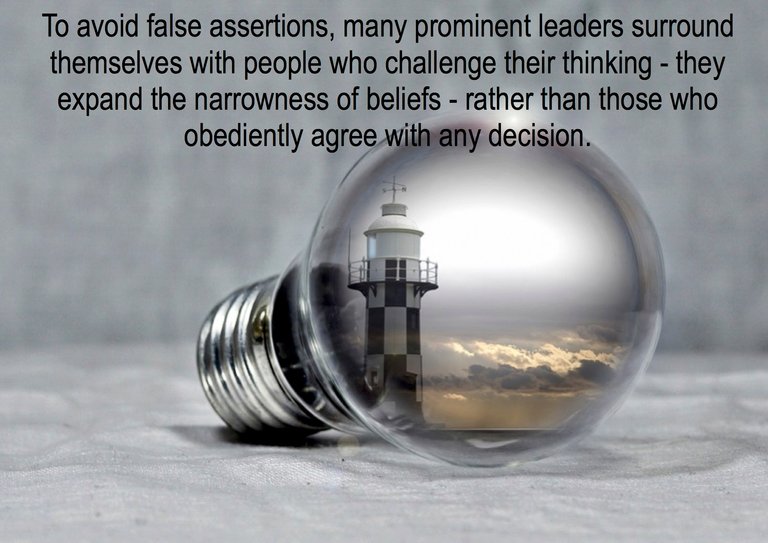
As never before now I am searching for and learning information on effective communication. Being on the way of creating my own business, I read a lot about this, then I act, make progress and at the same time mistakes, correct myself and study further.
Going to negotiations, my frequent mistake was obsession with my own arguments, inability to step back from the situation and look at it from several sides. The course "Successful Negotiations: Essential Strategies and Skills" turned out to be constructive for me in terms of disclosing psychological tricks-traps, into which a person often finds himself having a dialogue with others. And the ability to filter them makes possible to be more effective in conveying information and develops the ability to persuade. The course is presented by the University of Michigan and is led by Professor George Siedel.
Success in negotiations is not obtained by those who try to convince the other side to act in a certain way, but by those who approach a process in a complex way: a person himself is convincing, asks questions, collects information and then uses this data to analyze a position of the second party and its interests. Careful active listening to a partner is the basic rule of getting information.
PSYCHOLOGICAL METHODS AT NEGOTIATION
Below there is a list of 8 psychological techniques that can simultaneously become traps, if they are used by the other party.
I. MYTHICAL REPRESENTATION OF AN INDIVISIBLE PIE
People very often assume (and this happens automatically) that their interests are contrary to the interests of the other party. Negotiations are perceived as a kind of competition in which the winner gets the most delicious and large piece of pie. Reactive devaluation is closely associated with this concept.
Perceiving the other side as a rival, people tend to devalue its offerings.
Once a person realizes the misbelief that the "pie" is not an immutable quantity, he is able to find interests that do not contradict the interests of the other party.
II. ANCHORING
Max Bazerman and Margaret Ann Neale note that a person fixes his attention at the initial value, when an unknown object is estimated for the first time. To confirm this assumption, it is worth to consider the following experiment.
EXPERIMENT
Two groups of surgeons prepared a description of a hypothetical patient with symptoms of lung disease. The first group was asked a question indicating the probability of lung disease above or below 25% (the percentage was chosen randomly), the second - above or below 50%. The results showed that both groups were obsessed with these figures, and the first group said that the probability is approximately 25%, respectively, the second - 50%. This suggests that it is difficult for a person to disregard the figures he has heard as the initial information.
When conducting any negotiations, the central question is who will be the first to declare the cost. The worldly wisdom sounds like this: let the other side name the price. And how does the concept of anchoring deal with this situation? That's right, it claims that you should be the first to name the price, so there is a high probability that the other side will remember your figure.
TIP: To follow worldly wisdom it is better in those cases where the price of the issue is small. If you sell something, in price of which you are sure, you can say the cost first.
And what if both sides are so smart that they do not want to say the number first? In this situation, one can apply the principle of "information exchange" - neither side makes any proposal or counter-proposal. The parties, instead of price, give facts related to the cost of service or goods. Lawyers frequently use this strategy - exchange information and come to a consensus.
III. SELF-CONFIDENCE
Self-confidence has both a positive and a negative side. It is important to consider context here: when making decisions it is much more effective to be a realist, so excessive self-confidence will become a hindrance, but when a decision is already made, this feature will help motivate employees to do more than they think it is possible.
The problematic moment in making a decision is search for evidence of false statements, i.e. finding explanations and confirmations for ideas, which may be incorrect.

Creating a constructive conflict is a correct line of leader's behaviour.
IV. FRAMING
The point is that depending on how the choice is presented (negatively or positively), a person decides whether he will take risks or avoid them.
What does it mean? If a person faces a positive choice (for example, he is offered either $ 250 as a gusranteed gift or he has to choose one of four envelopes, one of which contains $ 1000 and all the others are empty), then he is prone to avoid risk (i.e. he will choose a guaranteed $ 250). Such an action shows aptitude to give preference for certainty. When, however, a person faces a negative choice (for example, either he has to pay $ 250 for a course or choose one of the envelopes, only one of which will have an obligation to pay a course at a cost of $ 1000), a person will most likely choose a risk.
All this theory is connected with the name of Daniel Kahneman who received the Nobel Prize in economics, explaining this behavior and supporting the theory of prospects.

Framing is considered a very powerful tool in negotiations, because decision-making process depends on how a situation is described.
V. AVAILABILITY
More often people are influenced by the most accessible information. On the question what is more frequent death reason in the USA - accidents on motorcycles or lung cancer, the majority responds that people die more in accidents. But in fact, statistics on mortality suggests the opposite - people die from lung cancer than from accidents four times more. Why is that? Of course, because accidents are cases that are shown on TV, on the radio, so people remember this information. But the media does not report cases of lung cancer.
Some businessmen deliberately avoid data availability trap. For example, for doing business Peter Lynch (manager of the first Magellan investment fund) was always looking for and choosing companies that were less known.
In negotiations, more effect will be reached by saying a less popular fact, because it will crash into memory of the other party, rather than something that is generally accepted6 so it will not be remembered by anyone.
VI. ESCALATION
The essence of escalation is that the most successful diplomats are able to look at negotiations from the point of view of the other side. A good example is President Clinton. Before meeting with the Prime Minister of another country, Clinton always had a conversation with a man who covered the main points-problems concerning the other side. After listening to the situation, the president was interested in how the illuminated problems were related to the interests of another country. Eventually, he reformulated the problems in such a way that they became concerns of the second-party prime minister, and this approach led to success for the President of the United States.
VII. REVERSIBILITY
The essence of this method is that when a person commits something for another one, the last one feels obligated to pay back the same. According to Richard Leakey (anthropologist) this is what distinguishes man from an animal. For the first time the phenomenon of reversibility appeared when people in olden times began to do mutual exchange, sharing instruments and food.
If one side concedes another in an important aspect for it, the latter one feels the need to repay the same.
VIII. CONTRAST
Depending on how things are represented - in comparison or isolated, they are perceived in different ways. If you first present the least attractive offer, after - a better one and, in the end, the most profitable one, then the chance to receive a positive response on the third offer is very big.
Be effective in negotiations and do not fall into the trap :)
The photos are under license CC0.
amazing!!!!!
following you
follow back
Thanks)
It was a pleasure to read your post. It has reminded me of Kahneman's "Thinking fast and slow" which is a great book on cognitive biases (I highly recommend it to everyone!).
Have you read any Cialdini's books? You would be interested, if you haven't. He is a social psychologist who writes on social influence. It may help you in running your business.
Anyway, I upvoted your great content and I wish you luck as an entrepreneur.
Thank you very much for your comment! It is so precious when people write well-grouded things like you do! I have not read Cialdini's books, but I will look for them. Thanks for your recommendation.
This post was resteemed by @resteembot!
Good Luck!
Curious? Check out:
The @resteembot users are a small but growing community.
Check out the other resteemed posts in resteembot's feed.
Some of them are truly great.
This post has received a 2.44 % upvote from @buildawhale thanks to: @crazy-daisy. Send at least 0.50 SBD to @buildawhale with a post link in the memo field for a portion of the next vote.
To support our curation initiative, please vote on my owner, @themarkymark, as a Steem Witness
Very useful since I plan to launch an online business, saving this in my files as reference when I negotiate. ^.^
I am glad u find it useful)